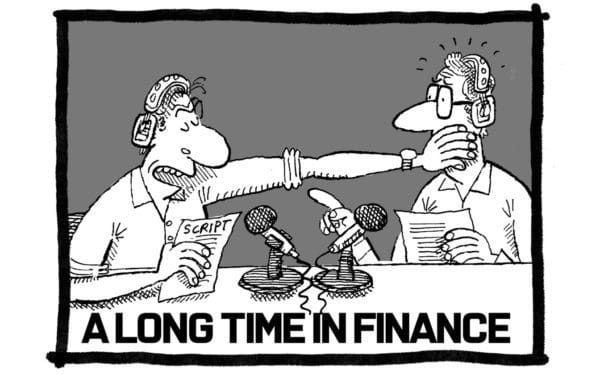A personal view from Ian Stewart, Deloitte’s Chief Economist in the UK.
The European economy seems to have dodged a very big bullet. Russia’s invasion of Ukraine created a very real risk of widespread energy shortages, blackouts and a deep recession in Europe. None now seem likely. This week’s briefing explains why – and why rejoicing is not in order.
Europe has avoided blackouts so far and seems likely to avoid gas shortages this winter. Instead of running out of gas, EU storage capacity is more than 80% full, a record for January, and almost twice the levels seen this time last year. Storage levels in Germany, which was heavily dependent on Russian gas, are close to 90%.
Lower energy demand and a surge in imports of liquefied natural gas (LNG) have helped Europe manage the energy price shock. Luck and judgement, in the guise of weather and adaptation, have saved the day.
Unseasonably warm weather has significantly dampened demand for energy. At the start of the year, eight European countries experienced record January temperatures, by wide margins. In Bilbao temperatures of 25°C eclipsed average temperatures for January by 10°C. Warsaw hit 18.9°C, 5°C above the previous record.
Higher energy prices and the risk of shortages have spurred innovations in energy efficiency. Governments have pushed energy-saving measures, with the German government, for instance, limiting the maximum temperature in offices to 19°C. High prices have driven some energy-intensive operations in areas including fertilisers, chemicals and paper production, out of Europe.
Together, these factors reduced demand for gas in the EU27 by over 20% in the final quarter of 2022 on a year earlier. Things have changed on the supply side too. Europe has reduced its use of Russian gas by over 80% in the last year. The gap has been filled by imports of LNG, by reviving idled coal-fired power stations and by extending the life of nuclear plants. Hydropower and wind generators have recently benefited from improved weather conditions and French nuclear plants, which were turned off for maintenance for much of last year, are returning to the grid.
The most intense phase of the energy crisis may well be past. Energy prices are off their summer highs, with European gas prices at a sixth of August’s peak. The oil price is down roughly 30% since last March. Lower energy prices are feeding through into lower levels of consumer price inflation.
And that, pretty much, is where the good news stops. Energy prices seem likely to remain high. We will probably have to live with elevated energy prices for the foreseeable future.
Despite recent reductions, European gas prices remain high by pre-pandemic standards. The current UK price stands at £1.40 a therm, rising to £1.80 next winter. This compares with an average price of under £0.50 a therm between 2015 and 2019.
In response to Russia’s invasion of Ukraine, Europe has chosen to replace Russian pipeline gas with pricier LNG. LNG has to be liquified before being exported from countries such as Qatar and the US, then shipped to Europe before being turned back into gas at regasification plants. Unlike pipeline gas, LNG is a tradeable good, and Europe is buying much of its imports in the Asian market where demand is strong and, with China’s reopening, increasing. No major new sources of gas are likely to emerge this year. Indeed, Russia could yet turn off the remaining flows of gas to Europe.
Markets do expect gas prices to ease back eventually. But even by 2025 markets are pricing gas at £1.10 a therm, more than twice pre-pandemic levels. Much the same picture holds in relation to the oil price.
Two further factors are likely to bolster energy prices.
First, governments cannot afford to keep subsidising energy bills on the scale they did last year. In the EU, some governments have spent the equivalent of over 7% of GDP shielding businesses and households from rising energy costs. This is unsustainable.
In the UK the average consumer faces a 20% increase in their energy bills this April as subsidies wind down. For UK businesses the cap on bills is being replaced by a discount scheme that will mean an even larger increase in energy costs from April. The Federation of Small Businesses says that about one in four small businesses will have to close, downsize or restructure as a result of the April “cliff edge” in energy prices.
The second reason why high prices are here to stay relates to the cost of energy transition. The marginal cost of renewable energy is, in theory, low, but the investment, in generation capacity, storage and distribution, needed is enormous. The International Energy Agency (IEA) estimates that global energy investment needs to rise from a current $2tn a year to $5tn a year by 2030 for at least 20 years to reach net zero CO2 emissions by 2050. Governments will pick up some of these costs (America’s $369bn Inflation Reduction Act, which provides generous subsidies for businesses in the US to invest in batteries, solar and wind turbines, has stoked tensions with the EU which sees the package as anti-competitive and discriminatory). But the scale of the spending needed is beyond governments and will require consumers to contribute too. Regulators in sectors such as water and energy already link charges to investment levels. The shift to renewables is likely to be financed in a similar way.
We have become used to relatively cheap and plentiful energy. In the US the share of consumer spending accounted for by energy costs has dropped from a peak of 6.0% at the time of the second oil shock, in 1980, to an all-time low of just 1.4% in early 2020. The era of ever declining energy costs seems to have passed. The transition to a clean, secure energy is a vital and hugely costly endeavour. Users will need to pay for it.
Write to us with your comments to be considered for publication at letters@reaction.life




